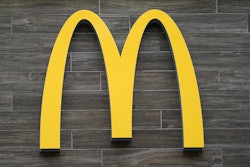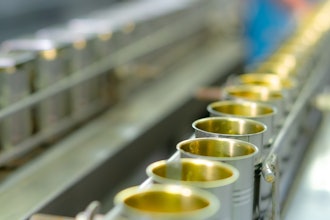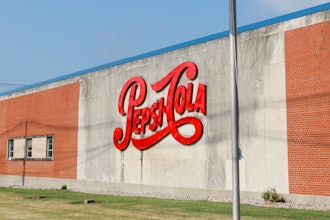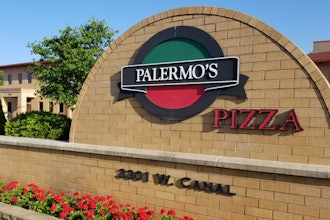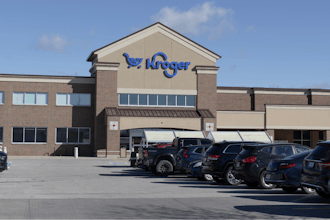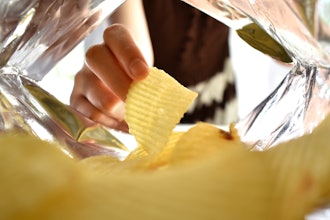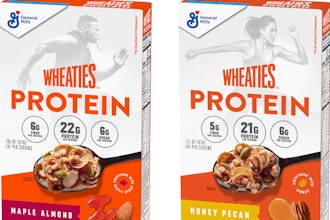Whether it is the USDA, FDA, OSHA or state and local agencies, the food and beverage processing industry is one of the most regulated in the United States. The term “safety,” as it applies to the industry, is prioritized in two distinct ways:
- The health and safety of the personnel who work in food processing plants.
- The safe handling/processing/storage of all food products.
Key Issues In Food Processing Plants
Having the proper flooring installed throughout a facility can make a significant contribution to safety in both categories. Some of the key issues in food processing plants are:
- Protecting the concrete substrate from damage, such as cracking, peeling and bubbling, any of which can constitute a trip-and-fall hazard. This type of damage also creates areas that are difficult to clean, and where microbes can more easily grow.
- Creating traction for a constant flow of both pedestrian and vehicular traffic in a wet environment.
- Withstanding thermal stress, especially in refrigerated areas.
- Maintaining as clean and hygienic of an environment as possible.
Flooring Challenges And Tips To Keep In Mind
1. Choose a Smooth, Non-Porous Surface Free of Grout Lines
While a long-time favorite for flooring in some food and beverage processing facilities, traditional dairy brick — or any tile-like floor covering with grout lines, for that matter — can be less than optimal when it comes to sanitation and maintenance. In food facilities, every seam and joint across a floor surface represents a potential contamination risk. Optimal facility hygiene in locations with grouted tile/brick floors depends on 100 percent adhesion of the cementitious or polymeric grout to each and every piece of tile, along the many hundreds of linear feet of grout lines throughout the floor surface. Even the tiniest area of grout becoming unbonded or pulling away from an adjacent tile creates a dark, moist fissure — the ideal environment for microbes to breed. Maintaining grouted tile/brick flooring is an additional challenge in busy processing operations. Grout lines are typically the first place to crack or wear away, exposing the edges of tiles that can then break away. The resulting crevices and openings in the floor are nearly impossible to properly clean, even with the most stringent sanitation routines. Frequent and inconvenient patching, as well as expensive re-grouting of tile/brick floors, must be regularly scheduled. In contrast, fluid-applied cementitious urethane and epoxy floors are installed as smooth, monolithic surfaces with virtually no grout lines, and can also be ordered in special antimicrobial formulations that help support pathogen control efforts.
2. Label Traffic Lanes and Work Areas
Floor markings that distinguish vehicular from pedestrian traffic lanes, as well as directionality, can help prevent accidents and enhance workflow. Color-coded floor indicators labeling specific areas of use, as well as applicable regulations can help increase:
- Productivity and performance, by reducing the number of unessential personnel in a given area.
- Sanitary conditions, by specifying that entering a critical area is limited to those wearing proper food processing work gear, such as booties, head coverings, masks, gloves, etc.
- Security of both food product and personnel, by making it clear to workers and visitors the areas they may enter with a proper badge, and which areas they are forbidden to enter; this can also assist safety officers in identifying unauthorized individuals.
3. Select Flooring that Bonds Well to the Substrate
Protective food facility flooring that inherently and fully bonds to the concrete substrate supports optimal facility hygiene. For example, rubber sheet-type flooring — because it does not inherently bond to the floor — must be secured to the concrete with randomly spread adhesive, which can allow the development of dark pockets between the floor covering and the concrete, allowing bacteria and mold to proliferate unnoticed beneath the surface. In contrast, high performance, USDA-compliant resinous coating systems are fully bonded to the concrete, virtually eliminating the risk of such pockets. Further, these long-lived floors demonstrate excellent durability, with outstanding impact and abrasion resistance, as well as exceptional compression strength when subjected to heavy duty conditions. Resinous flooring is available in moisture-tolerant formulations, enabling it to remain intact and fully bonded in wet processing areas. Some manufacturers also offer solutions to undesirable and otherwise difficult-to-address site conditions, such as concrete moisture vapor transmission, which can damage the bond, appearance and functionality of nearly every type of flooring.
4. Prevent Puddling by Ensuring Proper Slope of Floors toward Drains
Puddling, especially after hosing down a floor, not only creates wet areas that can harbor pathogens, but makes it far more difficult and unsafe for workers. Creating proper slope for drainage is routine for contractors who install fluid-applied resinous coatings.
5. Properly Protect Curbs and Secondary Containment Areas
Secondary containment concrete floors, walls and curbs must be protected with industrial, USDA-compliant coatings capable of withstanding any potential spills of the contained substances. When correctly installed, the coated surfaces will be smooth and monolithic to enable quick cleanup and proper disposal of any spilled materials. Where appropriate, choose safety colors for curbs to help minimize trip-and-fall accidents. Industrial resinous floor manufacturers offer a variety of secondary containment coatings for food processing facilities.
6. Eliminate 90-Degree Angles with Integral Floor-to-Wall Cove Bases
By eliminating sharp angles at floor and wall junctures, integral cove bases without seams can greatly minimize the areas in which contaminants can accumulate and grow — and make cleaning and drainage far more efficient and thorough. Fluid-applied resin floors can be used to build coves bases up to 10 inches high, and can even merge seamlessly into epoxy wall and ceiling systems where required.
7. Use Texture to Enhance Slip Resistance
Along with fluids, any type of particle, such as a powder or granule, can create a slip-and-fall hazard. While certain food processing rooms require smooth floors for optimal sanitation, other areas allow some level of slip-resistance for improved safety. Various types of fine aggregate can be incorporated into resinous floor finishes to create customized levels of texture, enhancing traction for both pedestrians and vehicles.
8. Reduce Hazards from Combustible Powders with ESD Flooring
Various combustible powder and granulated ingredients require special storage and handling. For example, the static electricity generated by simple physical movement across the floor can pose a real threat in the vicinity of these materials. As part of a facility-wide safety program, electrostatic dissipative (ESD) and/or conductive epoxy flooring can help to safely dissipate electrical charge from sensitive, high-risk locations.
9. Make Sure the Flooring Can Stand Up to Thermal Stress
Using very hot water or steam to sanitize processing areas can quickly take its toll on any flooring not up to the challenge. This is further exacerbated if the area being hosed down is a cold processing or refrigerated area. Extreme changes in temperature, or thermal shock, is a condition few types of flooring can withstand. Luckily, resinous cementitious urethane flooring is available to ideally perform under these conditions in food and beverage processing operations.
10. Ensure Floor Coating Can Tolerate pH Extremes
Food ingredients, chemicals and cleaning products can run the pH gamut from highly acidic to highly alkaline. Whether citric acid, alkaline cleaners or salt ingredients, ongoing exposure to extreme pH substances can cause premature deterioration of unprotected concrete. Further, the damaged, porous substrate can quickly become an invitation for bacteria to grow. To prevent this, resinous flooring offers innovative systems resistant to the high concentration chemicals, acids and alkalis found in the food industry.
Food plant managers shoulder the daunting responsibility of safeguarding the nation’s food supply and meeting stringent government standards, while also providing a healthy, secure work environment for their employees. The use of fluid-applied resinous flooring can help ease the burden on several fronts by enhancing sanitation efficiency, supporting contamination control protocols and simultaneously helping promote safe conditions for personnel. Resinous flooring offers food manufacturing facilities a long-lasting and effective solution with exceptional life cycle value.
Sophia Daukus is Marketing Communications Manager for Florock Polymer Flooring.






